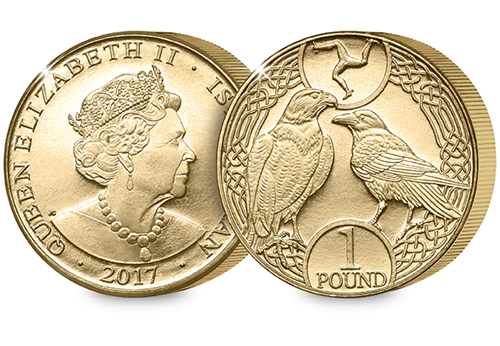Posts Tagged ‘numismatics’
The UK’s 12 sided £1 goes global!
Yesterday the Treasury announced that the UK’s 12 sided £1 coin would be going global, as overseas territories and Crown Dependencies will soon be able to create their own bespoke versions of the coin to replace the older £1 currently in circulation.
In 2017, the new Nations of the Crown 12 sided £1 made its UK debut, described by the Government as “the most secure of its kind in the world” due to the new design, featuring intermittent milled edges and micro-engraved denomination and year date which protects against criminals producing counterfeits copies. Before this, around 1 in every 30 round pound coins were in fact fakes.
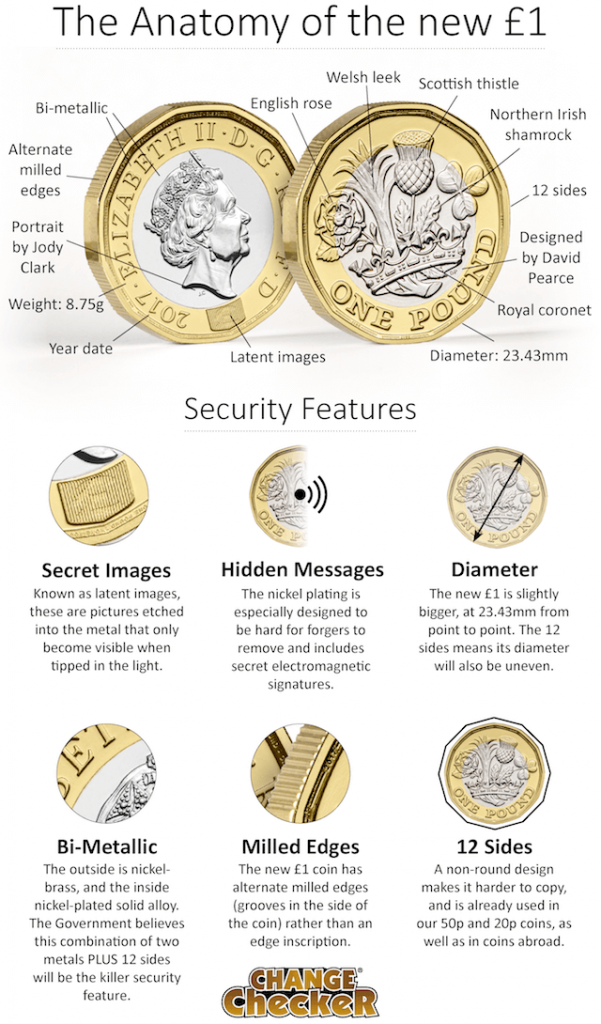
As many territories and dependencies currently circulate their own version of the older pound coin, they will now be able to protect their currency with this secure cutting edge technology. These coins will be produced by The Royal Mint to the same security standards as our UK coinage to thwart counterfeit activity.
The Nations of the Crown £1 was designed by 15-year-old David Pearce following a public competition in 2015. The design is made up of the English rose, the Welsh leek, the Scottish thistle and the Northern Irish shamrock emerging from one stem within a royal coronet to represent the four constituent countries of the United Kingdom.
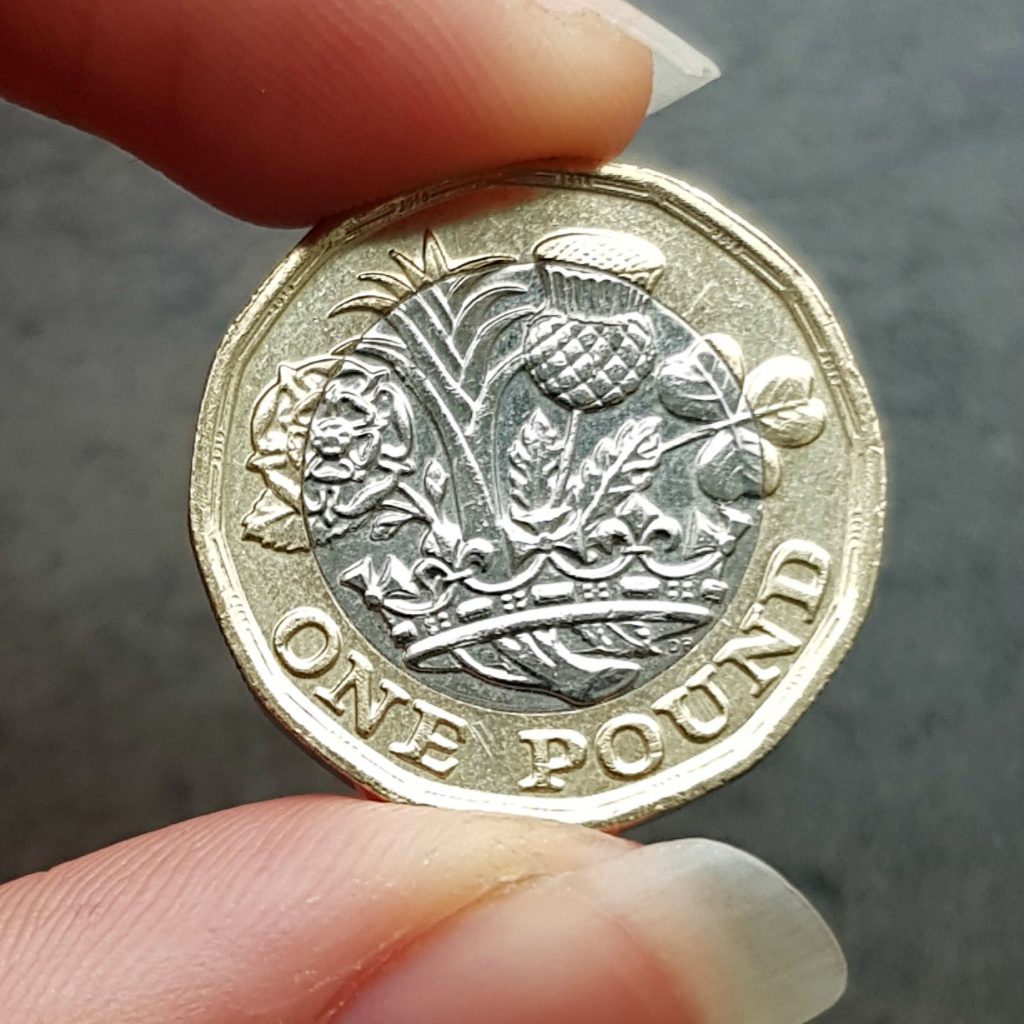
The Treasury expects the new versions struck for overseas territories and Crown Dependencies to feature images celebrating their heritage, history and culture to symbolise the close links with the UK.
Jersey, Guernsey and the Isle of Man all represent Crown Dependencies of the UK, whilst the UK overseas territories include Akrotiri and Dhekelia; Anguilla; British Antarctic Territory; Bermuda; British Indian Ocean Territory; British Virgin Islands; Cayman Islands; Falkland Islands; Gibraltar; Montserrat; St Helena and Dependencies (Ascension Island and Tristan da Cunha); Turk and Caicos Islands; Pitcairn Island; and South Georgia and South Sandwich Islands.
Robert Jenrick, Exchequer Secretary to the Treasury, said:“These new designs will reflect the rich and varying British communities across the world.”
Lord Ahmad, the overseas territories minister, said: “As well as helping to boost their identity, these new coins will also bring increased security to each of these economies.”
So Change Checkers from overseas territories and Crown Dependencies can look forward to the new coins being released soon, but what design do you think should be featured for each? Let us know in the comments below.
Is this the last Isle of Man Round Pound?
In 2017 the Isle of Man released this Raven and Falcon Uncirculated £1 Coin and following the Treasury’s update, this could now be the very last Isle of Man Round Pound!
First look: New Royal Mint coin designs for 2019!
Every year The Royal Mint mark the year’s memorable events and anniversaries that capture the nation by striking these stories onto circulating coins, and 2019 is no different.
Today, The Royal Mint have unveiled the new themes and designs for all the 2019 commemorative coins, and Change Checkers can look forward to some fascinating British anniversaries being commemorated.
50p: The 160th anniversary of the birth of Sir Arthur Conan Doyle
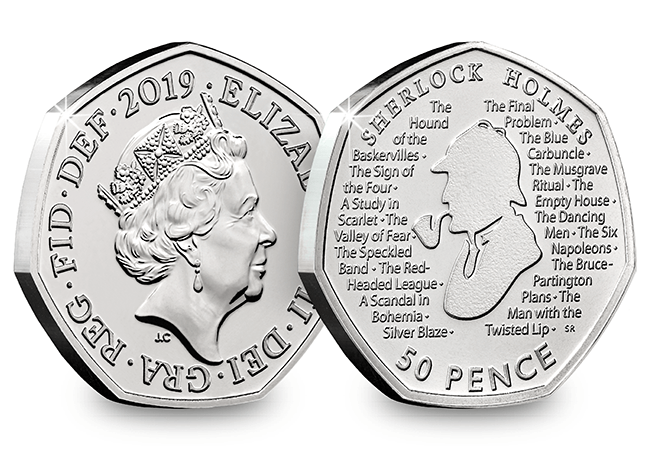
As the father of modern crime writing, Sir Arthur Conan Doyle’s legacy lives on 160 years since his birth, thanks to his iconic creation – Britain’s greatest detective, Sherlock Holmes™.
The classic tales of Sherlock Holmes and his sidekick Dr. Watson are treasured reads which have led Doyle to become one of the most famous writers in the world.
Reverse designer: Stephen Raw
This coin is now available to purchase individually in Brilliant Uncirculated quality here.
£2: The 260th anniversary of the formation of Wedgwood

The industrial revolution of the 18th century shaped Britain’s future and brought about great social changes and technological advancements. Josiah Wedgwood created his pottery empire using modern mass production methods, which we still use today.
Reverse designer: Wedgwood Design Team
This coin is now available to purchase individually in Brilliant Uncirculated quality here.
£2: The 75th anniversary of the D-Day Landings
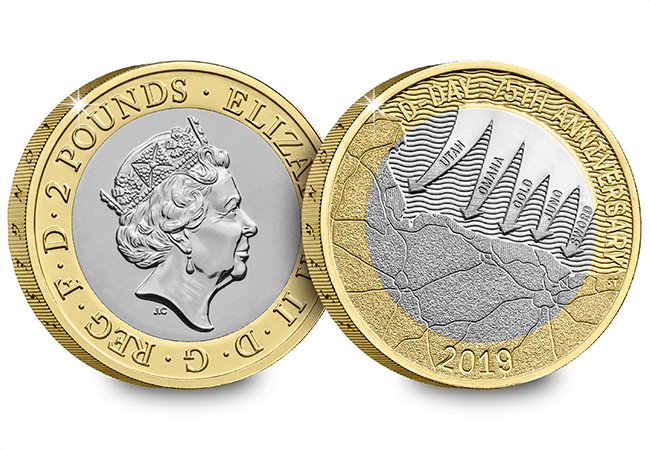
On the 6th of June 1944, the D-Day landings turned the tide of the Second World War. Allied troops landed at five different beaches codenamed Utah, Omaha, Gold, Juno and Sword for the largest amphibious assault ever launched. This gave them a position from which they could advance into Germany and paved the way for victory on the Western Front and the liberation of Europe.
Reverse designer: Stephen Taylor
This coin is now available to purchase individually in Brilliant Uncirculated quality here.
£2: The 350th anniversary of Samuel Pepy’s last diary entry

Samuel Pepy’s diary entries provide detailed and personal observations from some of Britain’s most significant moments in history, such as the Restoration, the Plague and the Great Fire of London. His diary has been essential for understanding these events and their impact on people at the time and give invaluable first-hand insights.
Reverse designer: Gary Breeze
This coin is now available to purchase individually in Brilliant Uncirculated quality here.
£5: The 200th anniversary of the birth of Queen Victoria

At her birth in 1819, no one knew that Queen Victoria’s reign would span the rest of the century and make her one Britain’s most famous rulers. She came to the throne aged just 18 years old, at a time when Britain’s Empire was growing and becoming the world’s pre-eminent superpower in an era of unrivalled peace and prosperity.
Reverse designer: John Bergdahl
This coin is now available to purchase individually in Brilliant Uncirculated quality here.
The announcement of the year’s coins is always an exciting moment for Change Checkers, particularly when the anniversaries are as significant as these.
And now we can now start looking forward to finding these new designs in our change throughout the year!
Own the 2019 Commemorative Coin Set
If you can’t wait to find these coins in your change, be one of the first to own the complete set!
50 years of The Royal Mint at Llantrisant… The move to decimalisation
Standing strong for over 1,100 years throughout Britain’s wars, political upheavals, social and economic progress and technological and scientific advances, The Royal Mint’s history can be traced back through our country’s coinage.
But it was on the 17th of December 50 years ago that The Queen herself opened the new site for The Royal Mint, which was moved to a purpose-built site in Llantrisant following 157 years at Tower Hill, London.
This was the first time since its inception that The Royal Mint had been based outside of London, and marked an incredibly important moment in the history of our coins.

The Queen opening the new Royal Mint in Wales. Credit: royalmintmuseum.org.uk
The move to Llantrisant
In 1966 it was announced that Britain would adopt a new decimal currency. This meant that hundreds of millions of new coins would need striking and Tower Hill simply didn’t have enough space to cope with this demand and so the decision was made to find a new location for The Royal Mint.
Llantrisant made it onto the shortlist of the top 7 locations, and as James Callaghan (Chancellor of the Exchequer, Master of the Mint and an MP for Cardiff) supported a move to Wales, Llantrisant was chosen for the big move.

Staff from Tower Hill visiting the new Royal Mint site in Llantrisant. Credit: royalmintmuseum.org.uk
Britain’s new Mint
The announcement was made in 1967 and construction soon began on the new site. For the Llantrisant area, the move meant more work and a regeneration of the town, as well as adding to the sense of history and tradition. It was estimated that the move would provide 10,000 jobs to South Wales.
It was in 1968 that the site was officially opened by Her Majesty The Queen when she switched on the coining presses to begin production of decimal bronze coins.
Llantrisant was built to house the most advanced coining machinery in the world and have a larger capacity than any other mint in Europe, necessary to cope with the amount of new coinage needed.
When the site opened, the circulating coin presses could strike up to 200 coins per minute, however the latest generation of presses today strike around 750 coins per minute!
Decimalisation of Britain’s coins
The 15th of February 1971 is known as the day that Britain “went decimal”.
Whilst this was the official ‘Decimal Day’, three years before this, the new 5p and 10p coins were actually introduced. These coins were the same size and value as the existing one and two shilling coins to make the transition easier for the British public.
It was in 1969 that the first seven sided coin – the 50p – was introduced to replace the 10-shilling note as a more economical alternative and then finally, on Monday 15 February 1971, the transition was complete when the half penny, 1p and 2p coins were also introduced.
The new Mint at Llantrisant successfully transformed hundreds of years of everyday currency from 12 pennies to the shilling and 20 shillings to the pound, to the new pound made from 100 new pence.

Royal Mint coin production plant. Credit: dailymail.co.uk
Today the Royal Mint is the market leader and the largest single supplier of plated coins and blanks in Europe. They can produce 90 million coins and blanks a week – that’s almost 5 billion coins a year!
And all this has been made possible thanks to the advanced facilities at Llantrisant, as pictured above, without which the move to decimal coinage simply wouldn’t have been possible.
Own this Historic Royal Mint anniversary DateStamp™
To mark the move of The Royal Mint to Llandistrant, you have the opportunity to own the Royal Mint in Wales 50th Anniversary DateStampTM.
Featuring the 2016 Wales £20 coin with the iconic Welsh dragon design, and postmarked 17th December 2018, exactly 50 years since The Royal Mint moved to Wales.

